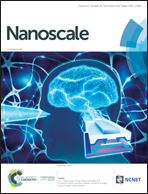|
Autores/as
Riera, R.; Feiner-Gracia, N.; Fornaguera, C. ; Cascante, A. ; Cascante, A. ; Borrós, S. ; Borrós, S. ; Albertazzi, L. ; Albertazzi, L.
|
Abstract
The future of gene therapy relies on the development of efficient and safe delivery vectors. Poly(β-amino ester)s are promising cationic polymers capable of condensing oligonucleotides into nanoparticles – polyplexes – and deliver them into the cell nucleus, where the gene material would be expressed. The complexation state during the crossing of biological barriers is crucial: polymers should tightly complex DNA before internalization and then release to allow free DNA to reach the nucleus. However, measuring the complexation state in cells is challenging due to the nanometric size of polyplexes and the difficulties to study the two components (polymer and DNA) independently. Here we propose a method to visualize and quantify the two components of a polyplex inside cells, with nanometre scale resolution, using two-colour direct stochastic reconstruction super-resolution microscopy (dSTORM). With our approach, we tracked the complexation state of pBAE polyplexes from cell binding to DNA release and nuclear entry revealing time evolution and the final fate of DNA and pBAE polymers in mammalian cells.
|

WoS
Scopus
Altmetrics
  
|
